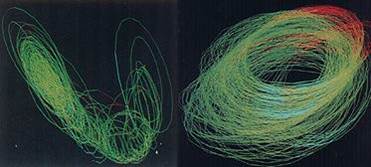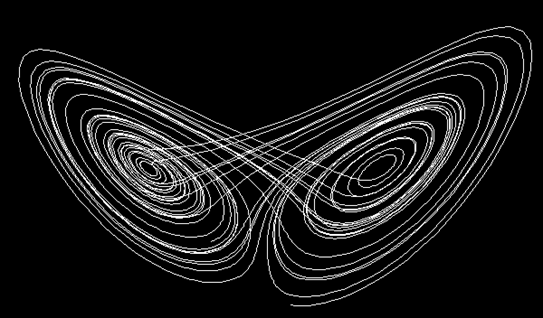Tuesday, 29 May 2018
What Chaos Physics Tells Us About the Dynamic Brain

Once upon a time, not that long ago in the history of neuroscience, the chaotic aspect of all of the brain’s neuronal oscillations was regarded as mere “background” noise. But that time is now past. The temporal dimension of brain activity, as expressed in cerebral rhythms, and the associated synchronization of neural activity, is now central to research in such complex areas as sleep and consciousness. Much of our current understanding of how the dynamic activity of the human brain can be chaotic and yet meaningful is owed to the pioneering research of Walter J. Freeman.
Freeman was one of the first proponents of the embodied dynamic approach that has now become essential to the modern cognitive sciences. And he laid the foundations for this new “neurodynamic” approach by drawing on concepts of chaos physics to study the olfactory system of the rabbit. Freeman was one of the first to realize that because the spatial distribution of electrical activity patterns is important for the perception of odours, this perception requires the “mass action” of thousands or millions of neurons. To try to understand how the brain gives meaning to an olfactory stimulus, Freeman trained rabbits to respond to odours while he recorded the electrical activity patterns of their olfactory bulbs. And to understand the complex, dynamic neural activity that he observed in these olfactory bulbs, Freeman applied non-linear mathematics and concepts from chaos physics.
It must be remembered that until the mid-20th century, scientists distinguished two types of natural phenomena: phenomena that were random and hence unpredictable, and phenomena that followed some deterministic equation and hence were predictable (in other words, if you knew their initial conditions, you could predict their future behaviour). But scientists began to realize that some deterministic systems were composed of very large numbers of entities interacting locally and simultaneously, which prevented an observer from predicting their behaviour or their change over time through linear calculations. In such systems, although their initial conditions could be described by deterministic equations, even a slight change in these conditions could suffice to make their behaviour unpredictable. Such systems that are sensitive to their initial conditions are said to be “chaotic”.
Let’s take a specific example. If we plot the cyclical movement of a pendulum according to its position and velocity, the resulting graph (known as a phase portrait) looks like a simple circle. But if we add a second pendulum to the first, its trajectory becomes far more complex. Even though it still satisfies simples equations, its behaviour is hard to predict. This is a case of deterministic chaos. And if we look at the corresponding phase portrait, we see that the lines trace circular shapes but never pass through exactly the same point, even though they form recognizable patterns. In the vocabulary of chaos physics, this kind of figure is called a “strange attractor”.

In the same way, Freeman showed that he could use a phase portrait to depict the simultaneous activity of two electrophysiological recordings in the olfactory bulb of a rabbit. When he did so, Freeman discovered that in the absence of a familiar odour, the rabbit’s olfactory system behaves like a chaotic attractor (and therefore not at all like a perfect sine wave). But if you present the rabbit with a familiar odour, the phase portrait suddenly becomes more orderly, somewhat like the orbit of a single pendulum (the pattern on the right in the image at the start of this post).
Learned odours can thus switch the system over from one attractor to another. Behind what seems to be nothing but noise, these chaotic fluctuations reveal regularities and properties. such as a capacity for sudden, extensive changes, which are compatible with those of human thought.
According to Freeman, it is these patterns arising at an intermediate level between the unitary activity of the neuron and the overall activity of the brain that constitute the meaning that we construct from the stimuli that we perceive. Hence, according to Freeman, it is at this level that our experience of the world resides, while the raw physical properties of the stimuli are quickly discarded by the brain.
From the Simple to the Complex | Comments Closed







